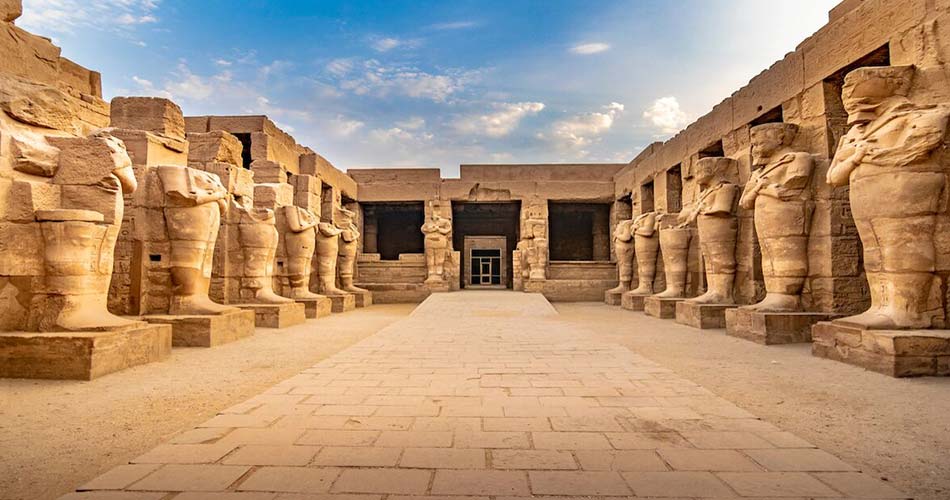Karnak Temple is one of the most impressive and significant temple complexes in Egypt, and is considered to be one of the world’s greatest architectural masterpieces.
Karnak Temple is located on the east bank of the Nile River in Luxor, and covers an area of over 200 acres.
Karnak Temple was built over the course of several centuries, beginning in the Middle Kingdom period (around 2000 BCE) and continuing through the Ptolemaic period (around 30 BCE).
The temple complex is made up of several different buildings and structures, each with its own unique history and significance. The Great Temple of Amun is the largest and most important structure in the complex, and was dedicated to the god Amun, his wife Mut, and their son Khonsu. The temple was originally built by the pharaoh Senusret I in the Middle Kingdom period, but was later expanded and renovated by many other pharaohs and rulers, including Hatshepsut, Thutmose III, Amenhotep III, Seti I, and Ramesses II. The temple’s walls and columns are covered in intricate carvings and hieroglyphics, depicting scenes from ancient Egyptian mythology and history.
The Temple of Khonsu is another important structure in the Karnak complex, and was dedicated to the god Khonsu, the son of Amun and Mut. The temple was built by Ramses III in the 12th century BCE, and features a large hypostyle hall with 12 massive columns and several smaller sanctuaries and chapels.
The Temple of Ptah is a much smaller structure than the Great Temple of Amun or the Temple of Khonsu, but it is still an important part of the Karnak complex. The temple was dedicated to the god Ptah, the patron deity of craftsmen and builders, and was built in the New Kingdom period. The temple’s walls are decorated with colorful reliefs and carvings, depicting scenes from the life of the pharaoh Ramses II.
One of the most impressive features of the Karnak complex is the Great Hypostyle Hall, which is located within the Great Temple of Amun. The hall is one of the largest and most impressive architectural achievements of ancient Egypt, with 134 massive columns arranged in 16 rows. The columns are over 10 meters tall, and are decorated with intricate carvings and hieroglyphics. The hall was built by Seti I and his son Ramses II in the 13th century BCE, and was used for important religious ceremonies and rituals.
The Avenue of Sphinxes is another iconic feature of the Karnak Temple , and is a long corridor lined with sphinx statues that once connected Karnak Temple to the nearby Luxor Temple. The avenue was built by Nectanebo I in the 4th century BCE, and was later expanded and restored by the pharaohs Amenhotep III and Ramesses II. The sphinxes are over 2 meters tall, and are carved with the faces of the pharaohs and the bodies of lions.
Karnak Temple played an important role in ancient Egyptian religion and politics, and was one of the most important religious centers in the country. It was believed to be the home of the god Amun, and was the site of many important ceremonies and festivals. It was also used as a center of government and administration, with the pharaohs and their officials using the temple as a place to conduct business and make important decisions.
Today, Karnak Temple is recognized as a UNESCO World Heritage Site, and is considered to be one of the most important and iconic monuments of ancient Egypt. It remains a popular tourist destination, offering visitors a chance to explore the rich history and culture of one of the world’s oldest civilizations. The temple complex is a testament to the incredible architectural and engineering skills of the ancient Egyptians, and continues to inspire and amaze people around the world.



